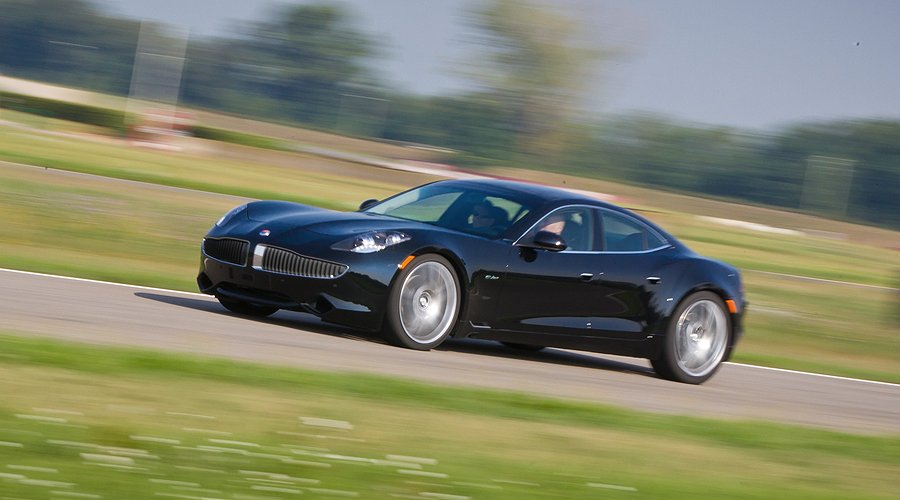
Razor-edged sports car, green eco-mobile, or luxury saloon? The new Fisker Karma suggests these descriptions are no longer mutually exclusive, as we take the Californian eco-warrior on Milanese roads to find out if its split personality can find an appropriate balance.
Dinner in a city palace in downtown Milan. The magnificent splendour of the 17th Century stronghold is used as a backdrop for Henrik Fisker to introduce his vision of the future of motoring to a small group of journalists. The native Dane is a former BMW and Aston Martin designer, who worked on projects such as the Z8 and DB9 and formed his own green sports car brand in 2007. Three years later, the company came of age when it previewed a dramatic hybrid concept called the Karma, which will be released in production guise from September. Fisker himself appears eloquent, confident and hopeful, but also reassuringly rational – which is probably how he managed to secure half a billion dollars in venture capital from investors in Silicon Valley and the rest of the world, as well as $529 million in loans from Obama’s national energy authority. The business plan is quite ambitious; 12-15,000 cars sold per year, which is no mean feat when the list price begins at £87,000.
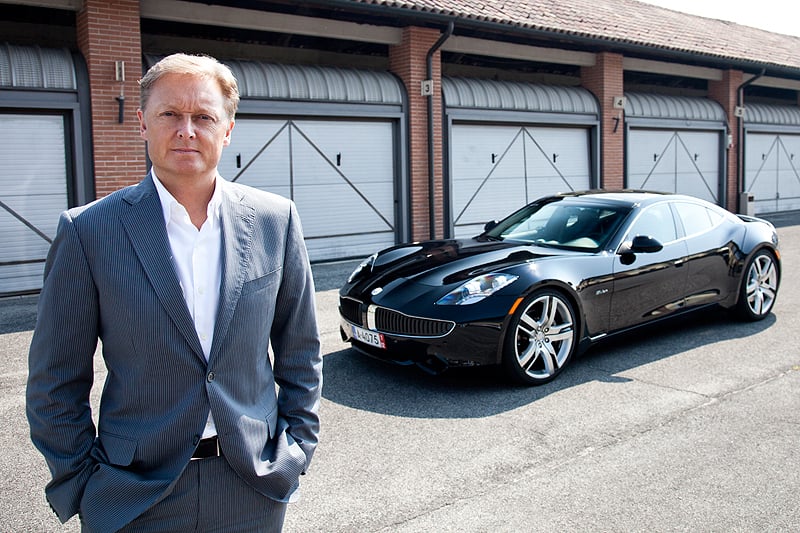
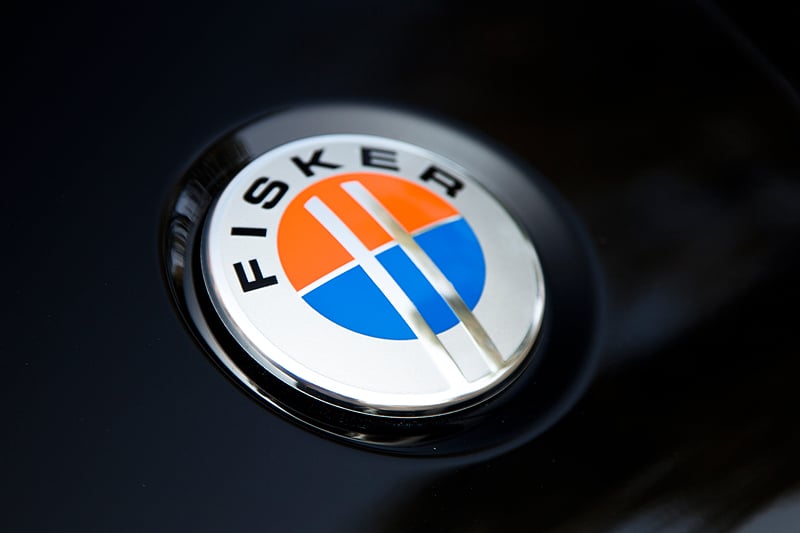
“Luxury is not only based on self-gratification, but also on social recognition,” says Fisker. Some spend a lot of money on a car just to be admired, but with the ecological paradigm shift this is only partly the case with the Karma. It’s no wonder that Leonardo di Caprio became the figurehead of the American green-glamour movement - just as the Karma concept was revealed. Now the early adopters and eco-solvent pioneers are being followed around the world, with around 3000 preliminary orders already received, according to Fisker. But how is it different from the Tesla Roadster, the other California-based electric sports car, of which only 2000 have been sold since 2008? The answer is that Fisker aimed his concept not only at the society of the future, but the present, too. “Tesla customers are restricted, because they can only drive electrically.” The Karma’s combination of two electric motors and a four-cylinder petrol engine, which can jump in and power a generator on long distances, frees customers from the range restriction which often puts drivers off switching to E-mobility. Despite this freedom, the Karma targets primarily short-range drivers charging their car overnight. Fisker admits, "Those who travel over 100km or more every day will certainly be better served by a diesel."
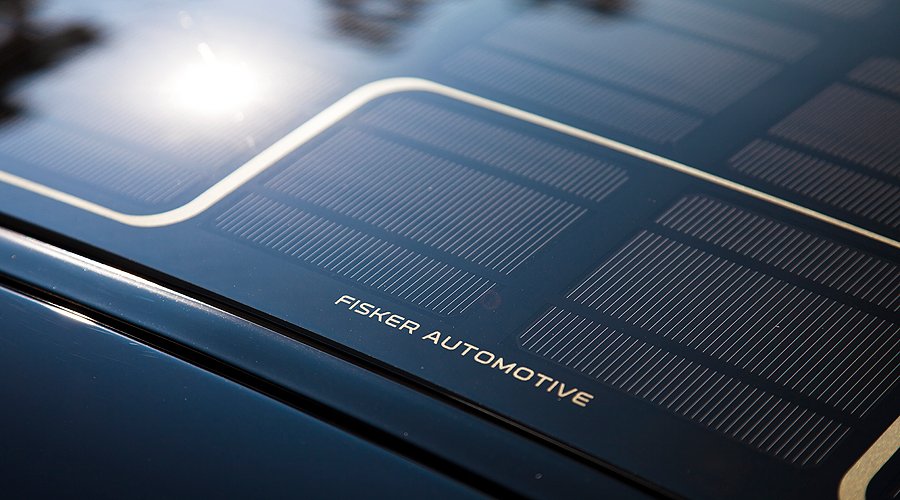
The project is tightly budgeted and already looks set to break even with the first model. The drivetrain and design have been taken care of in-house - the Karma is built at Valmet Automotive in the Finnish town of Uusikaupunki, where the Porsche Boxster and Cayman are also built. There are only three trim levels - no extras, no country-specific changes, no right-hand-drive version – which simplifies the manufacturing process. Within the context of the environmental claim, care is also taken in the sustainability of production. Thus, the Karma is probably the only modern car with recycled wood on board: no trees were felled for the veneer, as the wood comes from the Californian forest fires and the bottom of Lake Michigan. Shards of broken glass give the metallic paint its sparkle. And there is also an option to order vegan leather instead of hides from Scottish Highlands cattle. The solar roof, meanwhile, comes from Germany - it cools the interior when the car is parked, and supports the air-con while driving.
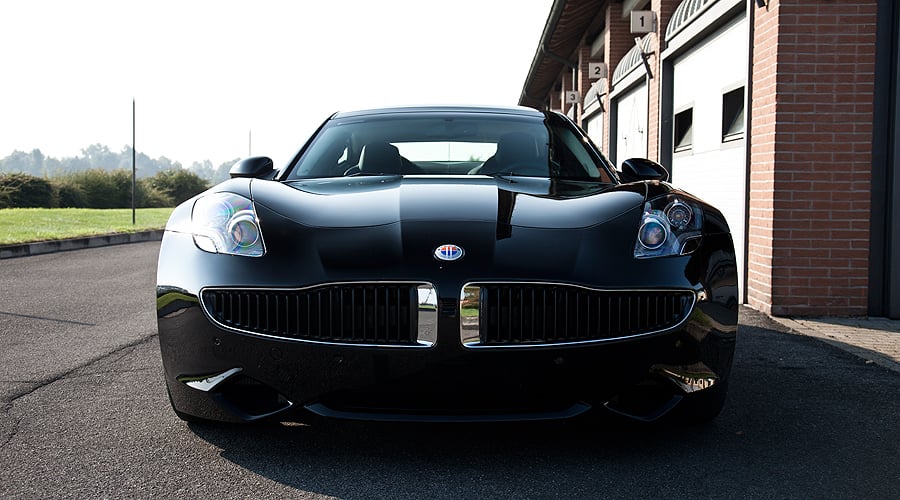
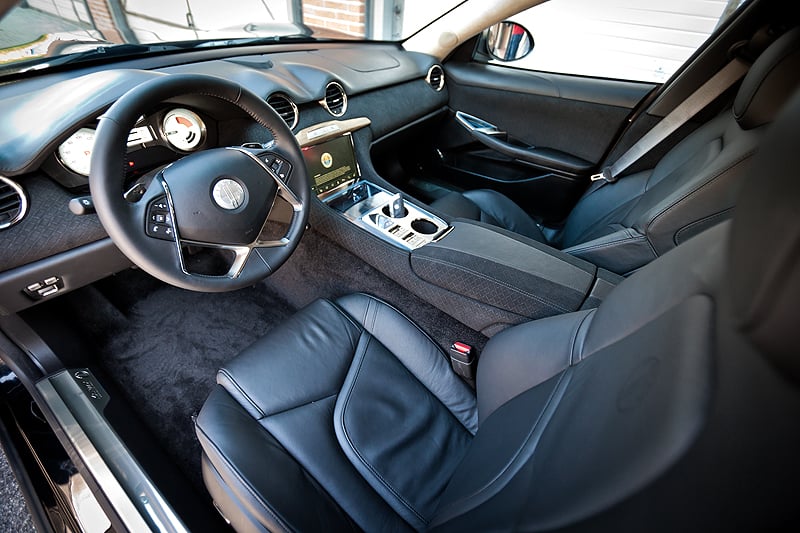
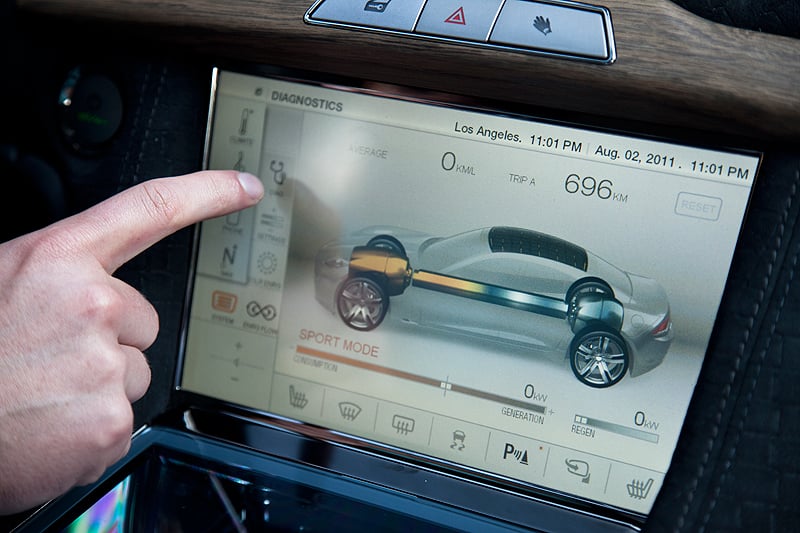
Next morning, it's time for our first contact with the car. The Karma is huge: at a shade under 5 metres, it is as long as a Porsche Cayenne, with a considerably longer wheelbase (of 3.16 metres). The standard 22-inch wheels provide the necessary ground clearance, while the dramatic bulging wheelarches give the glossy black Karma the sort of look that would appeal to a superhero from a Marvel comic. However, interior storage size and space are less impressive for a four-seater. "A woman doesn’t buy high heels to go jogging," retorts Fisker. “With us, you get not so much space, but more emotion." The Mercedes-Benz CLS and Aston Martin Rapide have proved this formula. It's a surprise, then, that in the cockpit the dials and the large touch screen for entertainment and information have nothing in common with the Atari-style pixelated offerings from other small manufacturers - in terms of user management and graphic design, even BMW and Audi could learn a lesson. These systems are the responsibility of former Apple developers.
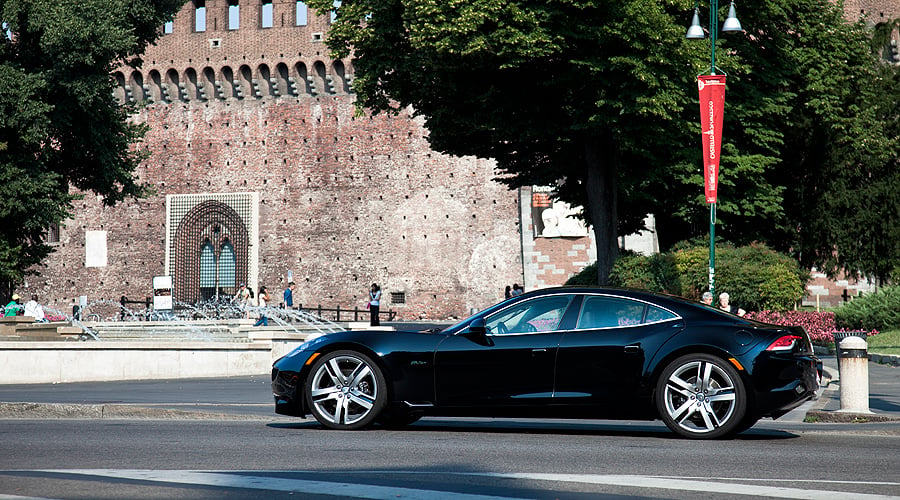
Which is all very well, but we want to know how the car performs in motion. Usually the centre of Milan is more suited to stop-and-go experiments, but in summer – with most residents on holiday – the streets are unusually empty. The car starts in the silent, electric 'stealth' mode - a tribute to the military vehicles developed for slow driving which inspired project Karma. The two electric motors in the rear offer a huge torque figure of 959lb ft from zero rpm, but the car tips the scales at 2.5 tonnes resulting in a modest 0-62mph acceleration time of at least 7.9 seconds (although you can still beat sharp-suited Vespa riders away from the traffic lights). Transmission is a single step; there are no gear changes, and the uninterrupted acceleration is, well... electrifying. Electric power alone gives a top speed of 90mph. Around 50 miles can be put behind the car before it starts producing emissions, with the 20kWh lithium-ion batteries given supplemental charge by the solar panel and regenerative braking system. When this expires, the charging process takes about six hours.
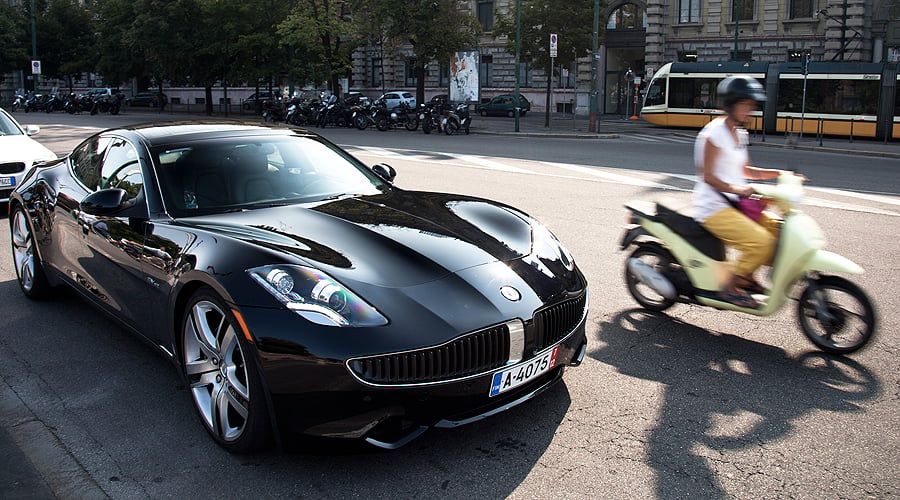
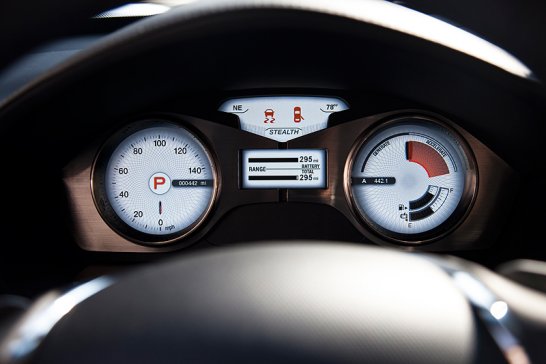
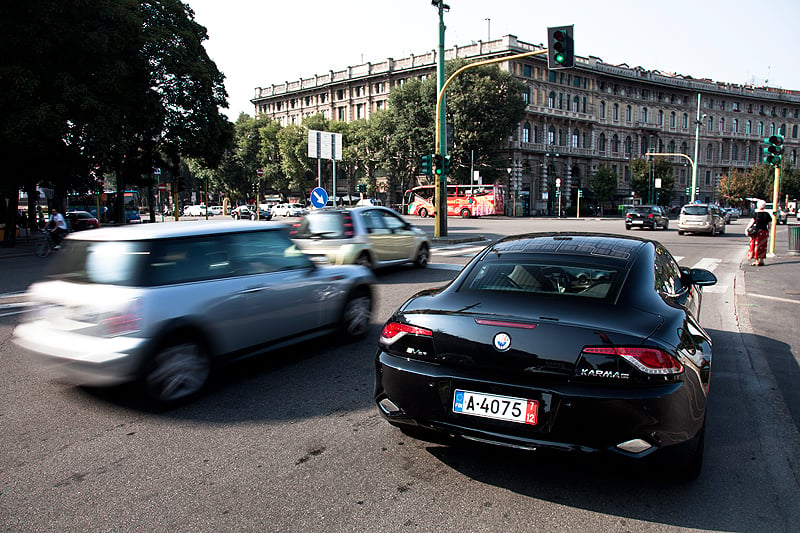
For those who desire more power or a greater range – or want to conserve battery power – a button on the steering wheel engages ‘sport’ mode. This fires up the 2.0-litre, four-cylinder turbo engine nestled under the bonnet, which acts as a generator and increases the range by up to 250 miles. In this mode, the Karma’s 0-60mph sprint drops to 5.9 seconds, and top speed rises to 125mph. During petrol-electric operation, the developers claim to have achieved an average fuel consumption of almost 118mpg and an emission value of 83g/km of CO2. This is promising in theory, but in practice the result is a little surprising: flooring the throttle creates a significant noise from the engine, but power delivery is delayed due to its having to be sent through the electric motors before reaching the rear wheels. The lack of acceleration combined with the aural drama from the exhausts (mounted directly behind the front wheels for stylistic reasons) can be somewhat confusing at first, as though you're accelerating in neutral in a car with a traditional gearbox. This may be one of the rare occasions where a new silencer would be a, er, sound investment…
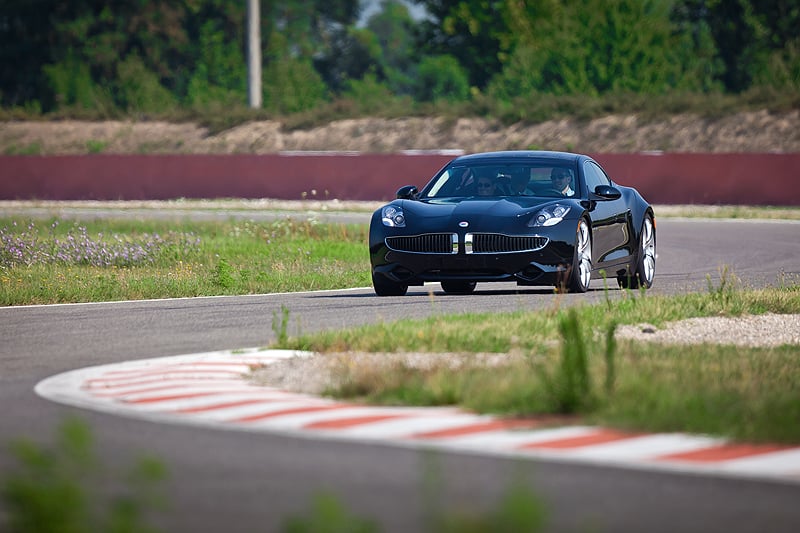
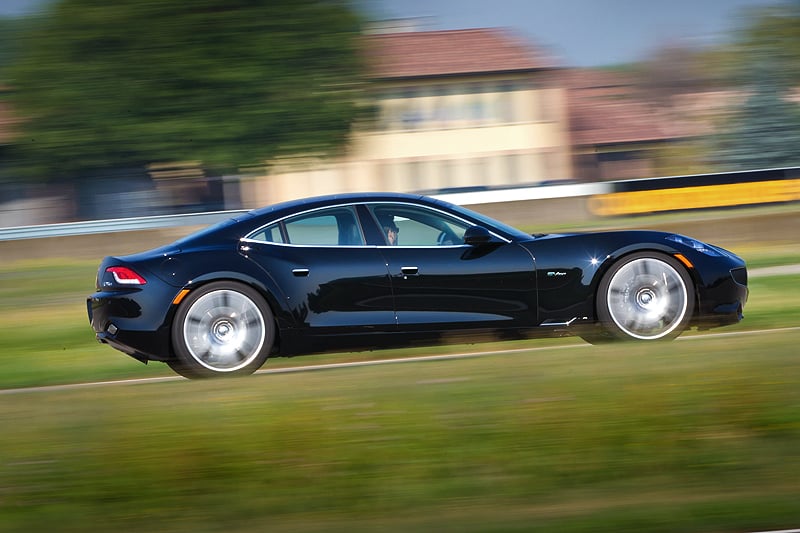
But that is a compromise that someone who wants to rank among the pioneers of electro-avant-garde should be prepared to make. According to Henrik Fisker, Karma owners are likely to spend about 80 per cent of their driving time in electric whisper mode anyway. In addition, many reservations are eradicated in time: "When the petrol engine and manual transmission were invented, most people were overwhelmed. You just need to adjust your way of thinking." Also, the engine-braking recuperation system is new, and the disc-braking system is only used at the absolute threshold. To us, the chassis and suspension seem significantly better than one would expect from a first work as well. On the Milan cobblestones, the 22-inchers are unexpectedly comfortable and even remain surprisingly agile and neutral on the circuit. The fact that there are different driving modes is not only for reasons of cost and efficiency, but also because Fisker wanted to create a Jekyll and Hyde sports car.
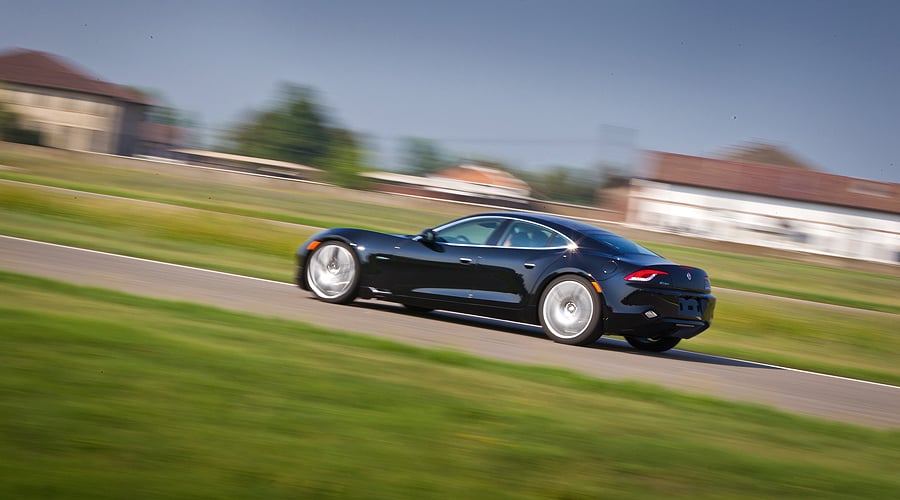
The Fisker Karma has indeed reached the benchmark set by the Porsche Panamera, Maserati Quattroporte and Jaguar XJ in their own segments. Whether European saloon customers have enough chutzpah to embrace the change remains to be seen. Also, resentment from the eco-elite towards any form of automobile hedonism could pose a problem. But according to Fisker, half their customers were former Mercedes owners and plan to use their electric hybrids every day. "Even I was surprised," he laughs. The generous 50-month warranty offered - including service - has helped ease owners of conventional cars through the transition, which is why you have to wait around four to six months for a Karma. Those prepared to wait a bit longer will also have the option of a two-door convertible and a third, yet-to-be-defined variant, which will debut in September at the IAA in Frankfurt. Meanwhile, work has already begun on a second series: 'Project Nina' is a radical ecological hybrid based on the technical philosophy of the Karma - but at half the price.
However, Fisker remains cautious about the long-term forecasts: “The gasoline engine will stay with us for the next 20 years as the dominant drive form, although electric cars will slowly grow from their niche.” Governments would need to subsidise the expansion of electric charging station networks, but perhaps they will agree to make such a commitment – after all, the name of Fisker's eco-limo loosely translated from Hindi means something along the lines of “Good deeds are rewarded.”
Text: Jan Baedeker
Photos: Jan Baedeker/ Bruce Benedict














